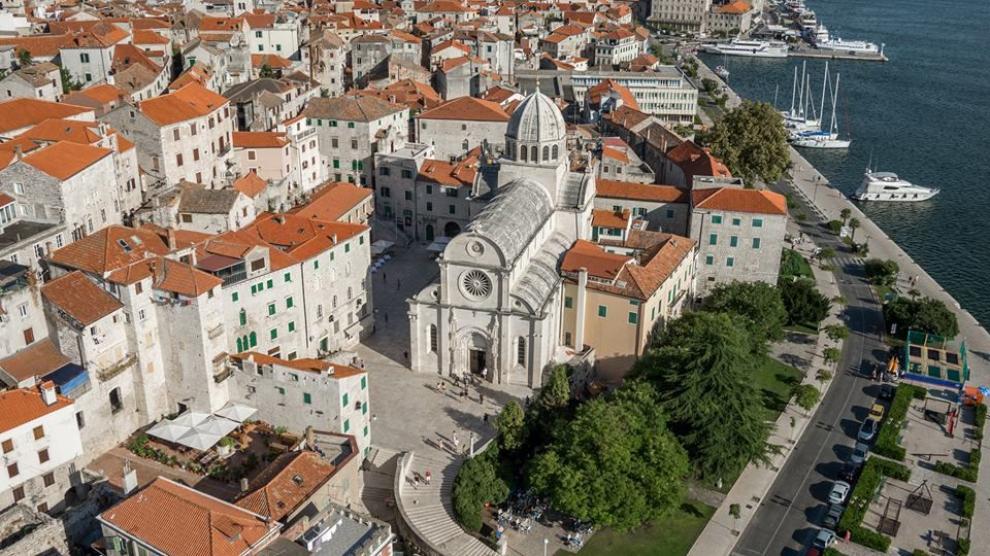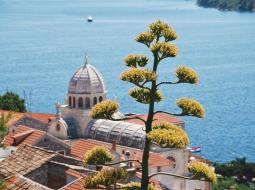Thessaloniki gets ready for its metro launch in November
The underground rapid transit lines have been under construction for almost two decades due to various project delays
 TheMayor.EU logo
TheMayor.EU logo 
Šibenik was founded by Croats. In 1066 it was mentioned for the first time under its present name in a Charter of the Croatian King Petar Kresimir IV. It was a seat of this Croatian King and for that reason, the town is also called "Krešimirov grad" (Krešimir's town).
Between 11th-12th centuries, Šibenik was tossed back and forth among Venice, Byzantium, and Hungary. In 1116 it was conquered by the Republic of Venice. Until 1124 the Venetians held it, when it was briefly lost to the Byzantine Empire, and then held it again until 1133 when Šibenik was retaken by the Kingdom of Hungary.
Šibenik received the status of a town in 1167 from Stephen III on Hungary. IN 1298 It received its own diocese.
The city, like the rest of Dalmatia, initially resisted the Republic of Venice, but it was taken over after a 3-year war in 1412. at the end of the 15th century, The Ottoman Empire started to threaten Šibenik, as part of their struggle against Venice, but they never succeeded in conquering it. In the 16th century, St.Nicholas Fortress was built and, by the 17th century, its fortifications were improved again by the fortresses of St. John (Tanaja) and Šubićevac (Barone).
During the Cretan War (1645-69) the Morlachs started settling Šibenik.
In 1797 the fall of the Republic of Venice brought Šibenik under the authority of the Habsburg Monarchy.
After the Congress of Vienna until 1918, the town was (again) part of the Austrian monarchy, head of the district of the same name, one of the Kingdom of Dalmatia.
In 1872, when Šibenik was part if the Kingdom of Dalmatia, Ante Supak became the town's first Croat mayor elected under universal suffrage. He was instrumental in the process of the modernization of the city, and is particularly remembered for the 1895 project to provide street lighting. On 28 August 1895, Šibenik became the first city in the world with alternating current-powered street lights.
After World War I, the town was occupied by the Kingdom of Italy until 12 June 1921. As a result of the Treaty of Rapallo, the Italians gave up their claim to the city and it became a part of the Kingdom of Serbs, Croats and Slovenes. During World War II it was occupied by Fascist Italy and Nazi Germany. Communist partisans liberated Šibenik on 3 November 1944.
After World War II Šibenik became a part of the SFR Yugoslavia until Croatia declared independence in 1991.
The town of Šibenik is located in the most protected natural harbour, in the centre of the eastern coast of the Adriatic Sea, at the mouth of the beautiful Krka River.
The population of Šibenik is 47,274 inhabitants (2011) and is the capital as well as the cultural, educational, administrative and economic centre of the County of Šibenik and Knin.
The city of Šibenik has a central location on the Adriatic Croatian coast, between two airports and by the main A1 highway. The city commercial port is one of the 6 ports open to public traffic with special (international) economic interest for the Republic of Croatia. Although industry in Šibenik today is in slow decline, it still remains important for overall employment alongside the trade sector and the commercial harbour. After a transition period (1990-2005) Šibenik lost most of its industry while tourism became a focus of economic development.
In 2015 the city received its first tertiary studies programme with the Polytechnic University.
Podi Inustrial zone, located in Šibenik is the lalrgest industrial zone in Croatia. Its position and transportation connections contribute to its business success. The Agency for Investment and Competitiveness of the Republic of Croatia has proclaimed Podi the best entrepreneurship zone in Croatia.

With its beautiful old town, medieval alleys and stairways, Šibenik is a characteristically atmospheric Adriatic town. A ring of fortresses and a spectacular Renaissance cathedral provide the city with big-league tourist attractions. On July 7, 2017, St. Nicholas Fort was added to the prestigious list of UNESCO World Heritage Sites, joining the Cathedral of St. James as the second world heritage site in Šibenik!
The city has a rich cultural UNESCO heritage and two national parks at 30 km distance. Combined with the sun-and-beach attractions, all this resulted in the number of tourists doubling in 10 years (2004 to 2014), most of them coming from Germany, Austria and Slovenia.
Address: Trg palih branitelja Domovinskog rata I, 22000 Šibenik